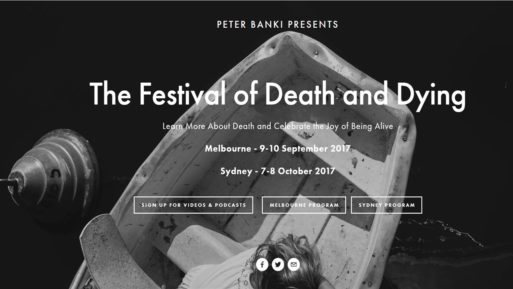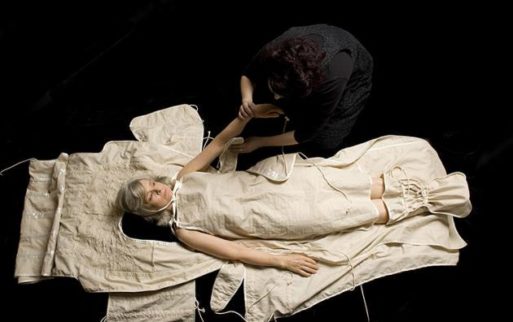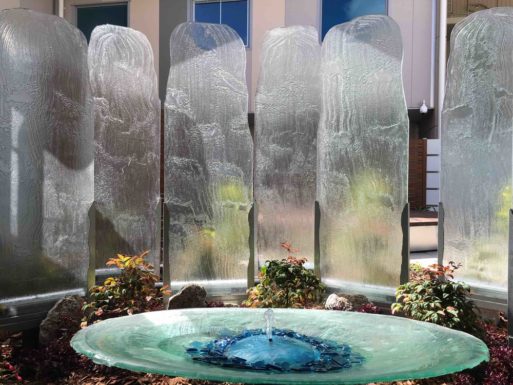
Credit: deathfest.net
Talking about death and dying isn’t particularly popular anywhere. But Australians are especially adept at avoiding the subject, at least according to a recent article in the Sydney Morning Herald. And that’s exactly why Peter Banki decided to organize the annual Festival of Death and Dying, which debuted in Sydney last year. This year he’s hosting two: one in Melbourne, September 9-10 and one in Sydney, October 7-8.
A philosopher by training, Banki conceived the idea for the festival as a means of keeping “the thing present to myself, because I’m no less frightened of it than anyone else.”
A Focus on the Body
Banki bills the Festival of Death and Dying as a way to “learn more about death and celebrate the joy of being alive.” It features a heavy emphasis on the body, with yoga practitioners, dancers and other visual and performing artists participating in workshops. It’s all about being comfortable in one’s body as a means of approaching the reality of death, Banki explains.

A burial garment and shroud designed by Pia Interlandi
Credit: pianinterlandi.com
One of the presenters, for example, is Pia Interlandi, president of Melbourne’s Natural Death Advocacy Network. A fashion and textile designer by training, Interlandi became interested in caring for the dead when she dressed her grandfather’s body after his death in 2008. Shortly after that, she became a qualified funeral celebrant, and in 2012 opened her studio Garments for the Grave. Her business is creating custom-made, biodegradable burial garments that are both highly personal and ecologically sound.
“I make garments for the funeral, for the person who has died, and I usually meet my clients before they die,” Interlandi explains. “I spend as much time as I can get with them, working on this garment. It starts off as a personal piece for them but then at some point we get their family in,” she adds.
The process of designing the garment is also a jumping-off point for conversations with loved ones about preparing for the death and caring for the person’s body after they die. Interlandi also works directly with families, helping and guiding them as they provide after-death care.

A “human room” designed by Efterpi Soropos
Credit: deathfest.net
Another presenter at the festival is Efterpi Soropos, a production designer who for the last several years has been creating “human rooms” in palliative care units in several of Australia’s hospitals. Using sound, lighting and scent, Soropos creates a healing space where patients and their families can escape the sterile, dehumanizing and intrusive environment that is the norm in most hospitals. But like similar efforts in the United States, the idea has been slow to catch on.
An Immersive Experience
Unlike many events of its kind, the Festival of Death and Dying is designed to be experienced in its entirety. Although day passes are available, it’s not a “mix and match” event.
“We’re not selling separate workshops,” Banki says. “We’re selling an experience. That includes the pauses, the breaks where people come together and talk. It’s structured such that there are a lot of breaks. You’re coming to explore the diverse aspects of death and dying.”
It sounds like it will be very interesting. I wish I could attend.

 Melbourne’s Festival of Death and Dying Is Happening This Weekend
Melbourne’s Festival of Death and Dying Is Happening This Weekend


 Our Annual Seven Holiday Gifts for Someone Who Is Grieving, 2024 Edition
Our Annual Seven Holiday Gifts for Someone Who Is Grieving, 2024 Edition
 “Making Mobiles” by Karolina Merska
“Making Mobiles” by Karolina Merska
 “Hands Up to the Sky” by Michael Franti & Spearhead
“Hands Up to the Sky” by Michael Franti & Spearhead














